Catherine GÉRY
The Impostures by and around Gogol
The article examines two manifestations of imposture : discursive imposture (in Gogol’s work) and epistemological imposture (around Gogol’s work), the former having in part generated the latter. Discursive imposture is another way of looking at the famous "illusion of skaz" theorized by the formalist Boris Eikhenbaum on the basis of the tale The Overcoat, where the literary imposture is, in the same movement, produced and denounced by the impostor himself (the authornarrator). The imposture of discourses is doubled in The Overcoat by an imposture of objects, which calls into question the ontological categories of meaning and those of the living and the dead. The result for the reader is a feeling of emptiness and discomfort that has led some critics to a new form of imposture : epistemological imposture, which aims to dispel the illusion and restore the logos to its rights. The film The Overcoat made by the FEKS collective in 1926 bears witness to these interpretative tensions.
Inna TROFIMOVA
The dialectic of the multitude and the lack of identity in Nikolai Gogol’s short story Ivan Fyodorovich Shponka and His Aunt
This article considers on the particularity of the construction of the image, plot and narrative structure in Gogol’s story. It’s about a certain strategy based on the creation of a multilayered image, which extremely expands the perception of the latter : from the comic to the eschatological. Another strategy that determines the development of the image and plot is associated with the breaking of the connection between the signified and the signifier, which leads to the transformation of the object of description into a simulacrum. The analysis of the interaction of these strategies is the purpose of this study.
Pierre-Étienne ROYER
Gogol and his reader
The question of imposture is approached here from the angle of reading. The first part of this article examines what antireading is, that is, a process which can be likened to rumour. It induces an approach of the text – this word being taken here in the broader sense of a group of signs – based on a preconceived interpretative grid, which is precisely the kind of imposture which should be avoided. Then reading is defined as a situation in which the reader is faced with the text seen as what Emmanuel Levinas calls ‘un visage’, an Other who is also a master, imposing a discipline of looking and listening. Finally, the article moves on to the pragmatics of interpretation : Gogol’s aim is to bring his reader to consider what they would rather not see and induce in them a process of inner reform and selfimprovement, which alone can keep the imposture of misreading at bay.
Ksenia FESENKO
A papiermâché character : servant in Gogol’s plays and prose
In his Notes on SaintPetersburg Nicolas Gogol criticizes the naive russian public in these terms : “If one shows us a somehow lively character, we think at once, isn’t it a personality ?” This idea is particularly true when we talk about the figure of a servant who is granted, in Gogol’s theatre and prose, with a very pronounced and often comic character, but isn’t developed well enough to be considered as a “personality”. Gogol’s servant is first of all an archetype : lazy, silent, cunning and always giving an impression of being serious, this character seems to be inspired by the commedia dell’arte and interpreted according to the russian reality. Acting as a shadow to his master, the servant leads a borrowed life marked by sleeping and cheating. From Osip in The Inspector general to Petrushka in Dead souls, the servant keeps the same traits and the same vices; passing from one text to another he becomes a mask of italian comedy. The short pantomimic scene played by Petrushka and Selifan in Dead souls makes apparent the theatricality of these characters. In this perspective, the play The Servants’ Quarters written around 1839 appears as an attempt to give to the character of the servant profundity and liveliness. However, proposing a panorama of different lackeys, Gogol doesn’t deconstruct the archetypical image, but makes appear its papiermâché aspect. This work explores the figure of the servant as a mask.
Stéphane POLIAKOV
Inspector General’s scenic heads
The face is central in Gogol (portrait, distorsion) in the midst of a century of a growing importance of fashion, trading and social diversity clearly visible in the novel and caricature. Gogol′s staging transformed Russian actors faces from the creation of The Inspector General in 1836. This paper studies the distributions of some parts (the Governor, Khlestakov) which show a major importance of makeup in relation with caricature and Gogol′s illustrated editions, in particular in the case of Stanislavski’s version in 1908, even though in 1921 the actor Michael Chekhov works on improvisation and naivety. Meyerhold′s 1926 production sees an apotheosis of collective ‘mimic acting’ culminating in the final mute scene. The question of the Gogolian actors faces deals with “characterization” and life, inorganicity, makeup and drawing, eccentricity and grotesque, the originality of a person and the generality of the type.
Léandre LUCAS
La poétique de l’escroc dans The poetics of the crook in Gogol’s The Inspector General and The Gamblers
The objective of this article is to study the figure of a swindler in Nikolai Gogol’s The Gamblers (1842) and The Inspector General (1836). In these two plays, Gogol exposes the mechanics of the swindler, his modus operandi and questions his identity. The article discusses the theme of the mask, essential for Gogol, in connection with the swindler’s figure. It is also the question of comedy and laughter in the works by Gogol that this paper addresses.
Thomas THISSELIN
From Gogol to Shostakovich How The Nose was received in the Soviet Union
We would like to address Gogol through Dmitri Shostakovich’s opera The Nose. Particular emphasis must be given to the interconnection between the composition and the context in which it was produced; indeed, this caustic satire of Russian bureaucracy was topical in the postrevolutionary period when it was written – a true artistic and social manifesto, to quote Solomon Volkov. Shostakovich was at a turning point in his young career as a musician, before censorship struck. The study of Soviet press articles provides precious insight into the reception of this opera in the Soviet Union, mostly in the 1930s. A second, more analytical part will reveal how Shostakovich drew upon his openness to modernity in music to create meaning from a seemingly senseless story, profuse with illogicalities and incongruous associations. The score conveys the sarcasm and irony of Gogol’s short story through rather unusual illustrations at a time when opinions on the work diverged; the late 1920s saw a change in the status of artists in the USSR.
Serguei TCHOUGOUNNIKOV
Gogol between Baroque and Expressionism : the “Gogolian” line within European formalism
The aim of our paper is to establish the Germanic background of the “baroque” and “expressionist” interpretation of Gogol’s style by Russian formalism (Eichenbaum, Tynianov). Indeed, the latter was largely influenced by the discovery of the “baroque” by German theorists of that period. The concept of “Baroque” is systematically assimilated by Germanic theorists to that of “Gothic” and “Expressionist. ” Based on the Formalist analyses, we try to show the contexts and goals of this “baroque” interpretation of Gogol’s work, which involves a real methodological challenge. This “Gothic”“ Baroque”“ Expressionist” line makes Gogol one of the emblematic figures of the Russian Silver Century.
Anne-Marie TATSIS-BOTTON
Gogoliana
Vladislav Otroshenko (b.1959) is a wellknown Russian writer whose works have been translated into many langages. He has been compared to Borges and Pierre Bayard on account of his interest for the mysteries of artistic creation and for the irrational, sometimes fantastic aspects of reality. No wonder then that his favourite author should be Nikolai Gogol, a writer who constantly entertained confusion between his life and artistic creation and created around himself an ‘alternative reality’, navigating between reality and imposture. His erudite approach combined to his honest approach of literary research allow V. Otroshenko to tell us, in a collection of essays entitled Gogoliad, what Gogol’s extraordinary lies led to, and he does it with passion, humour and tenderness. This article is devoted to presenting two of these essays : ‘Gogol and Gogol’, and ‘Gogol and the Phantom Point’.
Mourad YELLES
Gogol in the “Land of the Islands”. A crazy postcolonial story
Like many Algerian artists and authors (since the colonial period), the playwright Abdelkader Alloula was very attracted to RussianSoviet literature, in particular the works by Gorki and Gogol. With regard to the latter, his Diary of a madman will have a sufficiently lasting effect of seduction to push Alloula to stage it twice for the Algerian National Theater (in 1972 and in 1982) under the title Homq Salim ("A healthy madness" or "Salim’s Madness"). It is precisely this a priori improbable theatrical encounter between a Russian writer and a playwright from the "Land of the Islands" that we would like to evoke in this contribution through the aesthetic, sociohistorical and ideological issues of a particularly original "rewriting".
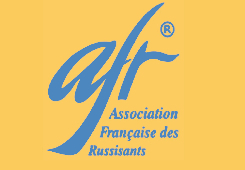

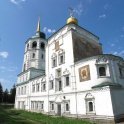
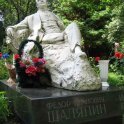


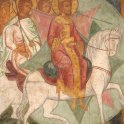








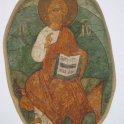




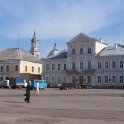
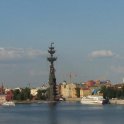

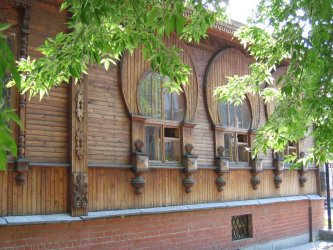
 Sommaire
Sommaire